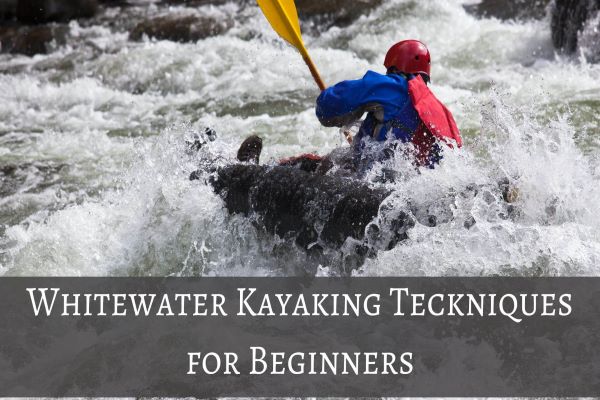Whitewater kayaking is a sport that constantly changes, with different seasons, water levels and styles of paddling requiring different skill sets. Whitewater Kayakers need to be well-rounded and have a variety of whitewater kayaking techniques in their arsenal if they want to be successful on the water.
You should make sure to practice the basic paddling techniques before progressing to more advanced techniques, like boofing and nailing big drops. Improving your skills will make you a better kayaker and allow you to have more fun.
What is Whitewater Kayaking
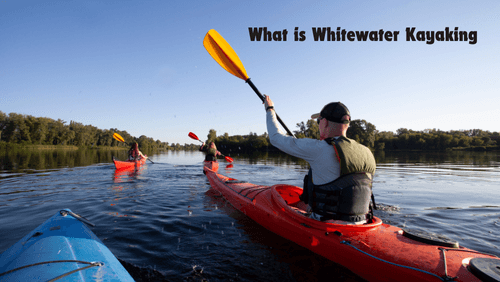
Whitewater kayaking is a sport that involves paddling a kayak on a river with rapids. It can be a very challenging and exhilarating experience, and it’s a great way to get outdoors and enjoy nature.
There are many different types of whitewater kayaking, from gentle Class I rapids to steep and dangerous Class V rapids. Regardless of the level of difficulty, though, it’s important to always be aware of your surroundings and stay safe while paddling.
In order to participate in whitewater kayaking, you will need the following;
- a kayak,
- paddle,
- spray skirt,
- PFD (personal flotation device),
- helmet,
- nose plug,
- clothing (dry/wet suit)
- and booties.
You can either buy or rent these items.
It’s also important to learn the basics of whitewater kayaking before heading out on the river. This includes learning how to roll your kayak back over if you capsize, how to brace yourself in rough water and how to execute basic maneuvers like edging and turning.
Once you have learned the basics, you can start exploring more advanced techniques like boofing (jumping off a ledge into the rapids below) and nailing big drops (paddling through a rapid that is taller than your kayak). These techniques can be dangerous if done incorrectly, so it’s important to practice them in a safe environment before attempting them on the river.
Whitewater kayaking can be a lot of fun, but it’s also important to be aware of the risks involved. Always make sure to wear your PFD and helmet, stay aware of your surroundings and never paddle beyond your abilities. With caution and practice, though, whitewater kayaking can be an incredibly rewarding experience.
The Most Essential Whitewater Kayaking Skills for Beginners
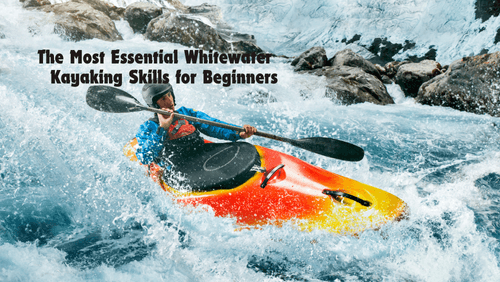
If you are new to whitewater kayaking, there are a few essential skills that you need to learn in order to stay safe and have a good time.
- The most important skill for beginners is proper paddling technique. You need to be able to control your kayak with ease and maintain your balance at all times. Mastering the basic strokes will help you navigate through rapids and stay on course.
- Another important skill is river reading. This involves studying the river ahead of time to determine the best route, identify obstacles, and anticipate possible hazards. Knowing how to read the water will help you avoid dangerous situations and choose the safest path.
- Finally, you need to be aware of your surroundings and know how to properly execute rescues if needed. There are many different types of rescues, so it is important to know which one is best for each situation. Being able to rescue yourself or others can make the difference between a good trip and a bad one.
These are just a few of the essential skills that every beginner should learn. With practice, you will be able to safely enjoy all that whitewater kayaking has to offer.
Basic paddling techniques for whitewater kayaking
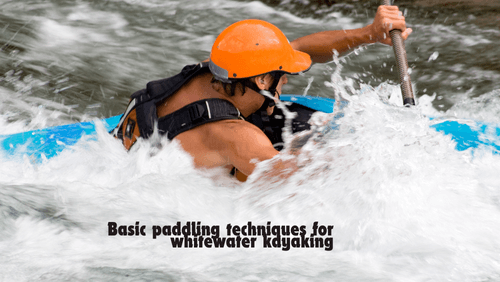
It is important for kayakers to never stop developing their skills. However, if you’re just starting out in the sport, there are a few basic techniques that you should learn first.
Here are four essential whitewater kayaking skills for beginners.
- the forward stroke,
- the reverse stroke,
- the sweep stroke,
- and the draw stroke.
The Forward Stroke
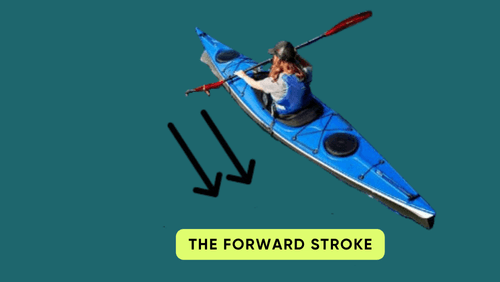
The forward stroke is the most basic and fundamental paddling technique. It is used to propel the kayak forward and should be done with a smooth and steady motion. It is the stroke you will use most often when paddling.
To perform a forward stroke, reach your paddle out in front of you and plant it in the water. Lean into the paddle and then pull yourself forward, using your core muscles to generate power. As you move forward, sweep the paddle back towards your hip so that it’s ready for the next stroke.
The Reverse Stroke
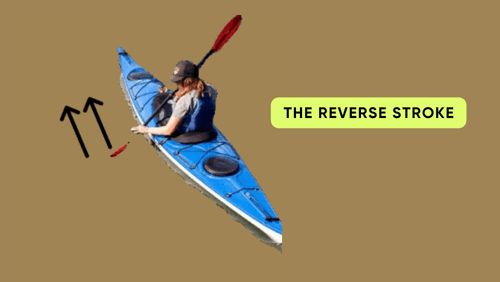
The reverse stroke is a technique used in whitewater kayaking to help the kayaker move backwards..
This technique can also be used to help the kayaker move away from obstacles or used to slow down or stop your kayak
The reverse stroke can be used in conjunction with other strokes, such as the forward stroke, to help the kayaker maneuver around obstacles and in tight spaces or move through rapids.
To do a backward stroke, reach your paddle behind your hip and dig into the water. Be sure to keep your arms straight and use your trunk muscles to generate power. As you move backward, push the paddle back towards your feet so that it’s ready for the next stroke.
One of the most important things to remember when executing the reverse stroke is to keep the paddle blade close to the surface of the water. If the paddle blade is too deep in the water, it will create drag and make it difficult for the kayaker to move backwards.
The Sweep Stroke
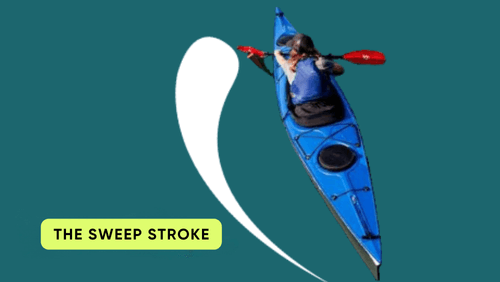
The sweep stroke is an essential kayaking technique for navigating through whitewater rapids. It helps you turn your boat quickly and efficiently, and it can also be used to help you get back on track if you start to drift off course.
To execute the sweep stroke, start by paddling towards the direction that you want to turn. Then, as you reach the turning point, sharply sweep your paddle across your body so that the blade of the paddle is pointing in the direction of the turn. Hold this position for a few seconds, then smoothly return your paddle to its original position.
The Draw Stroke
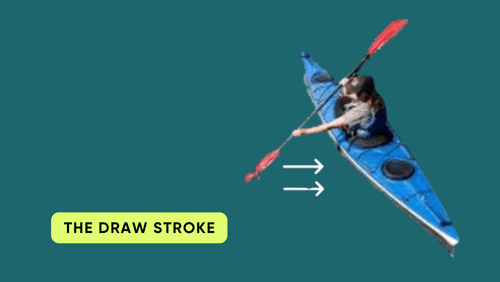
The draw stroke is one of the essential whitewater kayaking skills for beginners. It is used to move the kayak sideways and can be used to avoid obstacles or to position the kayak for a better descent through a rapid.
To execute the draw stroke, paddle on the side of the boat that you want to move towards. For example, if you want to move the kayak to the right, paddle on the right side of the boat.
Pull the paddle towards your body and then extend it back out to the side of the boat. This will create a force that will move the kayak to the right.
You can also use the draw stroke to help control your descent through a rapid. For example, if you are approaching a large drop and want to avoid hitting the rocks at the bottom, you can use the draw stroke to move the kayak to the side so that you miss the rocks.
The draw stroke is an essential skill for all whitewater kayakers, so make sure you practice it before heading out on your next adventure!
Tips for Getting Started in Whitewater Kayaking
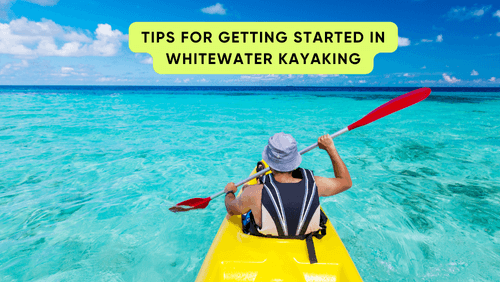
If you’re new to whitewater kayaking, here are a few tips to help you get started:
1. Learn the basic strokes – the forward stroke, reverse stroke, sweep stroke, and draw stroke. These basic strokes will help you navigate through whitewater rapids and maneuver your kayak.
2. Practice in calm water before heading out into whitewater – this will help you get used to the feel of a kayak and the techniques required for whitewater kayaking.
3. Stay alert and aware of your surroundings – whitewater kayaking can be unpredictable, so it’s important to be aware of your surroundings at all times and know what to do if something goes wrong.
4. Wear a life jacket – this is essential for safety and should always be worn when kayaking in whitewater.
5. Get experience with a kayak instructor – if you’re new to whitewater kayaking, it’s a good idea to get some experience with an instructor before heading out on your own.
This will help you learn the basics of whitewater kayaking and increase your chances of having a safe and enjoyable experience.
Whitewater kayaking is an exciting and exhilarating way to explore the outdoors. By learning the basic strokes and techniques, you can safely enjoy whitewater kayaking and have a great time on your next adventure!
Final Thoughts

Whitewater kayaking can be a lot of fun, but it’s important to remember that it can also be dangerous. Make sure you are aware of the risks involved and always take the necessary precautions to stay safe.
Also, remember to always wear a life jacket – it could save your life. And finally, get experience with an instructor before heading out on your own. This will help you learn the basics of whitewater kayaking and increase your chances of having a safe and enjoyable experience.
